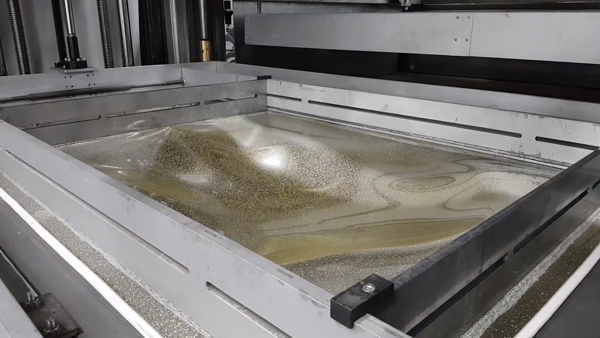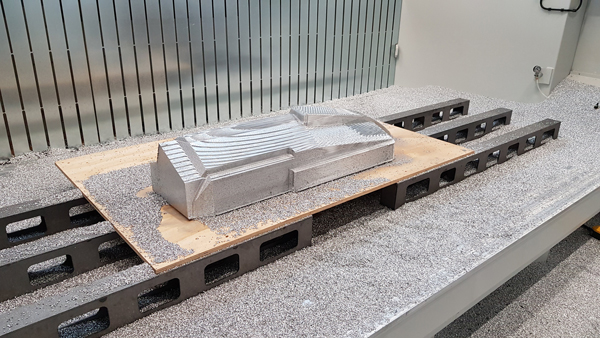Vacuum forming is nowadays a widespread technique, for it is a precise, effective, and quite a cheap kind of process when compared to other plastic manufacturing processes.
Vacuum forming is a version of thermoforming, a production process where a plastic sheet is heated and then forced against a mould thanks to the application of vacuum, which makes the sheet perfectly adhere to the mould imitating its form.

Plastic thermoforming pros
Plastic thermoforming is a process that allows fast and cheap series productions, and it is widely used in industrial manufacturing as much in the DIY context. Among the crucial advantages of vacuum forming, the employment of very low pressures, if compared to injection or other molding techniques.
The use of low pressures allows the involvement of quite cheap and common materials in the production of the moulds, which means design freedom: the chance to use common materials in the prototyping stage allows to test and explore several designs without any particular risk.
Another big advantage of vacuum forming is the one offered by the high automation level, helped out by the usage of innovative CNC machinery in industrial manufacturing: every workpiece can count on the precision of less than a millimeter, without further adjustments. Thermoforming is the ideal process when dealing with surfaces that need to be quite detailed while maintaining a minimal thickness.
Vacuum forming gives the possibility to process coextruded shapes, too: different materials, with distinct structural and functional features, can be processed within the same thermoforming session.

The thermoforming process stages
Our company is a vacuum forming specialist, working with plastic manufacturing processes since the late 70s. Our decades-long experience led us to the persuasion that only maintaining the most part of production on-site would have allowed us to meet the client demands down to the smallest detail.
Once the workpiece is defined, the construction of the mold takes place: since it can be made out of wood or other cheap and easy-to-process materials, the mold model can be tested and fixed several times.
The ultimate mould, the one used in the very series production, can be made of aluminum or heat-resistant epoxy resin. Aluminum is widely preferred when the mold may need higher resistance to wear and abrasion: that’s the case of big series productions, which can stress the structural features of the mold.
The mold can be thermostatically controlled, in order to have precise monitoring of the process and adjust tolerances and repetition accuracy.
The plastic vacuum forming process
Vacuum forming is a manufacturing technique involving several stages of the process, most of which are closely associated with the available machinery. The high level of automation featured in the thermoforming process makes the manufacturing scenery fairly heterogeneous on a local and global scale.
Apart from machinery and technical equipment, the vacuum forming process has well-defined stages:
- clamping: the plastic sheet needs to be clamped to the moulding machine in order to remain still during the process. This stage is generally an automated one, for it is crucial to have a millimetric precision in this phase of production;
- heating: vacuum forming needs vacuum and heat, as said. The stage of heating is critical to a fine result, because it’s important that the sheet is equally heated on the entire surface and throughout its thickness. It is common indeed that heating machinery to use infrared technology and energy controllers to allow better results;
- vacuum: the ultimate molding takes place thanks to the application of vacuum; a pump extracts the air in between the mold and the plastic sheet, allowing a perfect adhesion;
- finishing: once the thermoformed sheet is cooled and stabilized, it can be separated from the mould. The finishing process belongs to this stage of production: at this stage, it’s possible to trim, create grooves or add details and decorations to the ultimate workpiece.
As briefly explained, the vacuum forming process allows pinpointing accuracy and an execution speed not comparable with other molding techniques. It’s the ideal manufacturing process when you need a rapid prototyping option to remain open, or when the object might need several tests before going into production.
LMP is a vacuum forming specialist who can boast over 30 years of experience in plastics and fiberglass industrial processing. Since the late-70s our company philosophy is based on a close cooperation relationship with the clients, involving their needs and intentions in the whole production process.
We’ve grown old though, so we set up a classic contact form for you to reach us!
